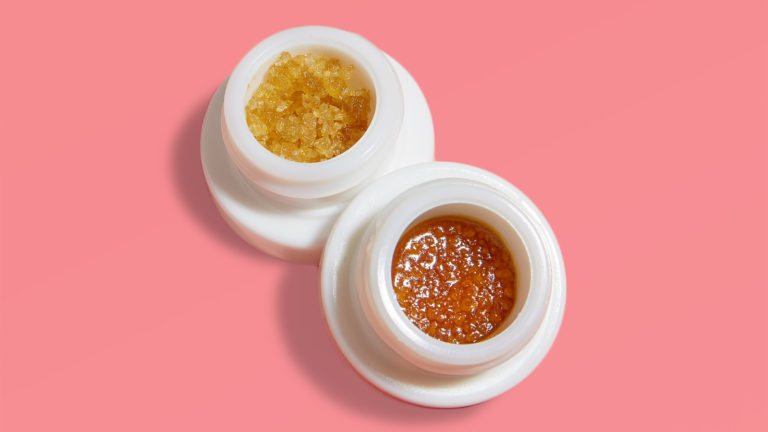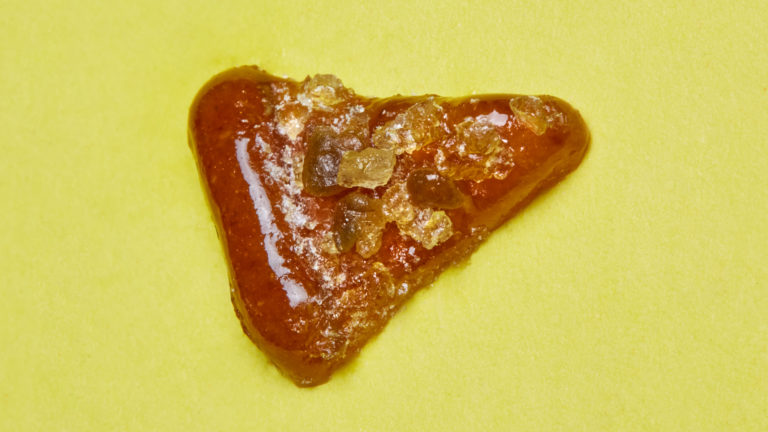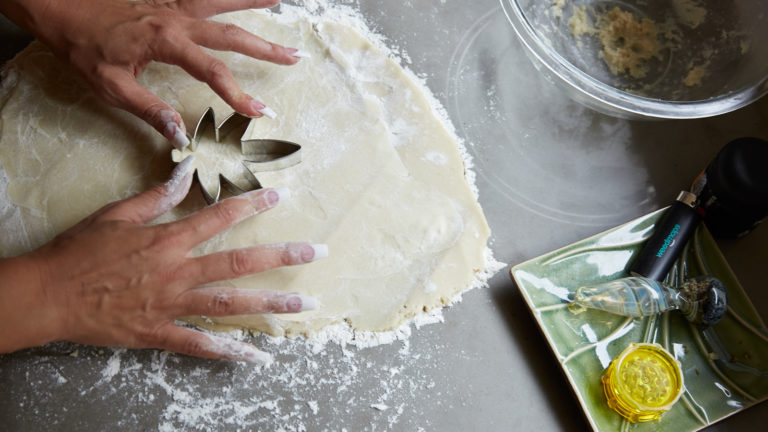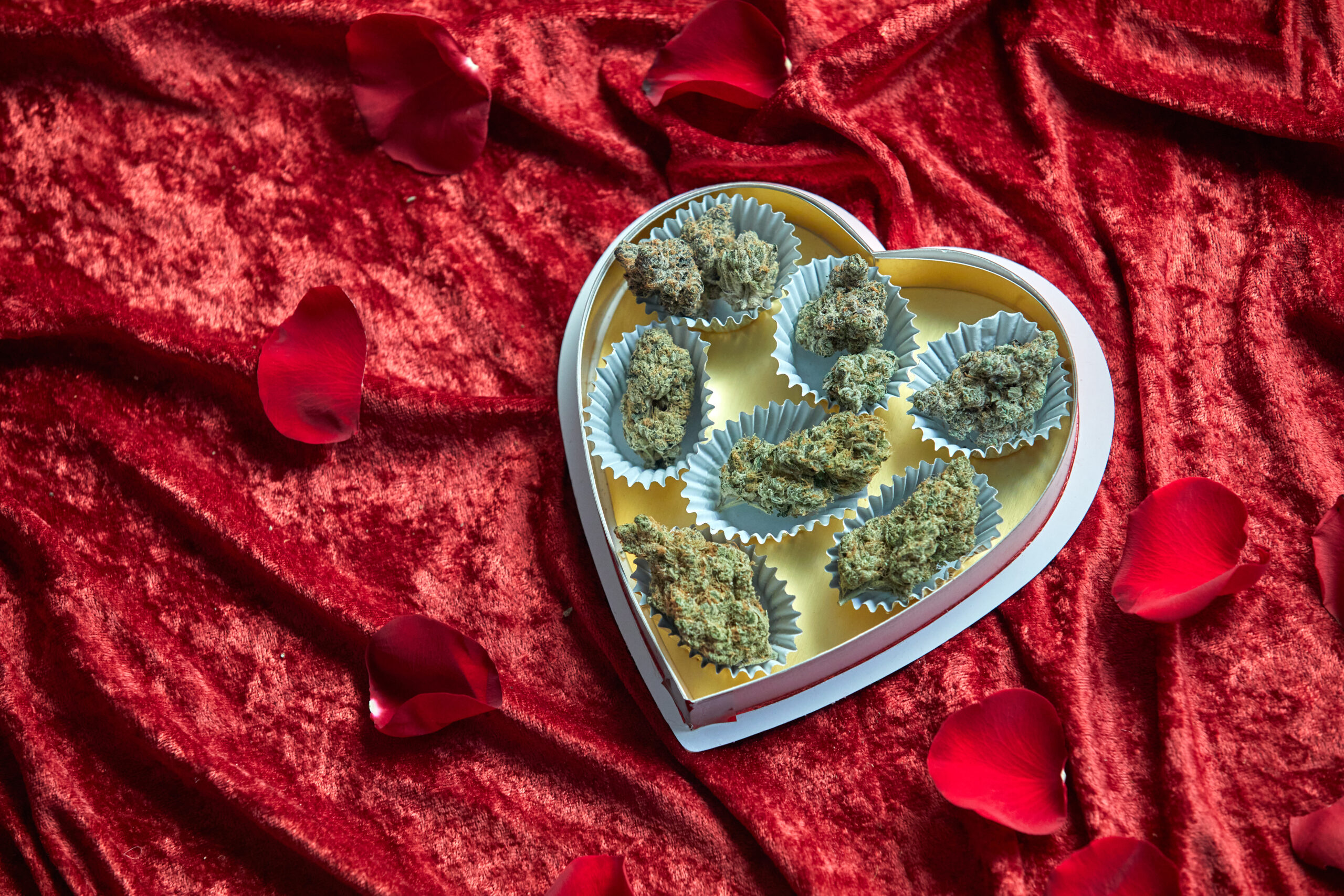Homemade edibles crafted with DIY infusions are a rite of passage for many industrious stoners. Nowadays, however, practically every cannathusiast has some measure of cannabis concentrate quietly aging away in their stash box. What if, instead of labor-intensive, cannabis-infused oils or butters, you could use bargain extracts to medicate dishes?
Decarboxylating cannabis, infusing an oil, and calculating concentrated dosages for edibles is a labor of love. If it could be done with a fraction of the effort by using the concentrates taking up space on your rolling table, then why not?
We took some of our own leftover concentrates into the kitchen to learn just how easy it is to medicate meals, snacks, and even baked goods with last month's bargain dabs.
 Photo by: Gina Coleman/Weedmaps
Photo by: Gina Coleman/WeedmapsImage lightbox

Step one: the menu
Whether you're medicating a peanut butter sandwich or a caesar salad, you'll first want a clear idea how not just the flavors, but also the chemistry of your dish will respond to cannabis extract.
For example, Rick Simpson oil (RSO) and full-extract cannabis oil (FECO) are full-spectrum extracts. This means they contain the botanical essence of the whole plant, not just the extracted cannabinoids. As such, they retain a grassy, herbaceous flavor powerful enough to affect the flavors of whatever's cooking. Butane hash oil (BHO) and CO2 extracts can be skunky, artificially perfumed, or largely flavorless, depending on the product. Hash and kief can be prepared similarly to how one would prepare cannabis flower for culinary use.
Certain cooking oils are more effective carriers for THC. For example, dairy fats are less stable than a vegetable oil (like olive oil) and are less likely to melt in a way that ensures even dosing throughout. MCT oil is an excellent flavorless carrier but its low smoke point makes it less skillet-friendly than virgin coconut oil or canola. Examine your recipe to learn which oil or infusion method will be most effective.
Most cannabis concentrates can be used to medicate your food, and the main variables of potency, flavor, perfume and viscosity can all be managed with relative ease.
 Photo by: Gina Coleman/Weedmaps
Photo by: Gina Coleman/WeedmapsImage lightbox

Step two: preparing your concentrate
Many cannabis concentrates do not need to be decarbed prior to cooking, but others do, so it pays to know who needs what.
Distillates are favored by canna-chefs for their flavorless, odorless, activated, and ready-to-incorporate character, the trade off being the loss of entourage effects found in full-spectrum extracts. Semi-solid cannabis concentrates, like those found under the dab counter at the dispensary, have notoriously high THCA contents, but it's critical to remember THCA must be decarbed. typically by way of torch, e-nail, or vape pen, or in this case, a low-temp oven. Similarly, hash and kief require decarboxylation in order to activate the THCA into THC.
In order to decarb your wax, budder, sugar, hash, keef or similar extract, you'll need:
- An oven set to 200 degrees Fahrenheit
- A baking sheet lined with parchment paper
Spread your extract/plant matter on the parchment paper and bake for approximately 20 minutes. Dry plant material should be shifted with a spatula halfway through baking. Extracts will begin to bubble when they've reached temp, so keep a lookout. Pro tip: to free concentrate from an old cartridge, cool it in the freezer. It will evacuate the container via clump rather than as a super sticky oil.
The process to decarb a full-spectrum oil, like FECO or RSO is slightly different and can be done with some double boiler action rather than in an oven. You'll need:
- A cooking pot
- Cooking oil (canola or veg)
- A glass or silicone container
Place your full spectrum oil in the smaller container and fill your pot up with enough canola oil to float the container upon. Slowly heat up the pot until bubbles begin to form in the RSO or FECO. Using a cooking thermometer will keep you from overheating your material - once you've hit the 200-degree (Fahrenheit) sweet spot, pull your extract off the heat and let it cool to room temp. Cooking oil can be slowly added to loosen up the texture and make the extract more workable.
 Photo by: Gina Coleman/Weedmaps
Photo by: Gina Coleman/WeedmapsImage lightbox

Step three: perfecting the dose
Now that your material is ready for consumption, you can turn your attention to accurate dosing. When cooking with cannabutter or a specifically extracted oil, that fat is typically incorporated into the recipe just as butter or oil would be, but when cooking with extracts, the options to medicate are less restrained.
Accurate dosing requires three primary pieces of info:
- the amount of cannabis used (in grams)
- the THC percentage of said cannabis
- the number of servings prepared
To calculate the dose per dish, use this equation: amount of concentrate [by the gram] x THC percentage x 1,000 / number of servings
So, if you have one gram of 70% THC cannabis oil for 10 muffins, that equation would look like: 1 x 0.7 x 1,000 / 10 = 70 milligrams of THC per muffin.
Decarbed cannabis concentrates can be integrated into the fatty or oily elements of a dish, or they can be added to the meal as a finishing touch. That is to say, you can add your decarbed honeycomb to the butter you're using in your cookie recipe, or you could simply dose each cookie as they cool. Likewise, you could sprinkle decarbed kief over a mushroom ragout as garnish, or stir it in with the Marsala. Depending on the concentrate, it can be much easier to make edibles with a high potency per serving.
Bottom line
Whether you're into cookies or vegan pot pies, making edibles is a fun, cost-effective, mostly easy way to make the most of your cannabis concentrates. Cooking with concentrates can also make it much easier to achieve a high potency with a little bit of cannabis if that is the desired goal. As always when making edibles, start with the lowest dose possible and up that dose slowly to ensure you have a good time.



